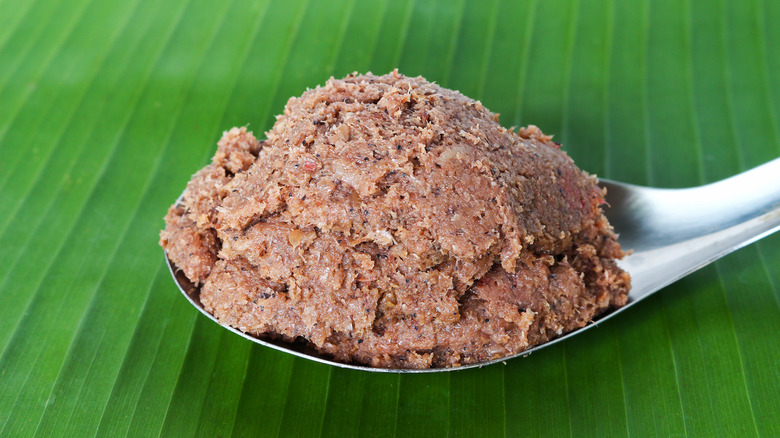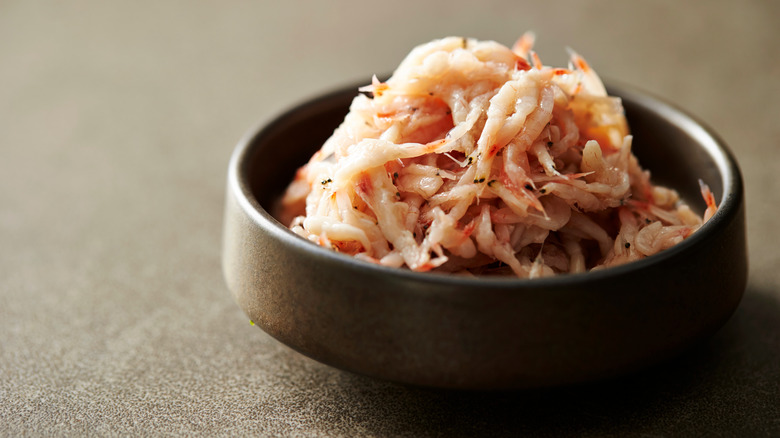Fermented Shrimp Is The Unsung Hero Of Asian Dishes
When you think of the fifth taste of umami, it's almost always an Asian dish that comes to mind, and rightly so. Not only was the umami flavor discovered by a Japanese chemist, but few cuisines fundamentally revolve around umami in the way that Asian cuisines do (via The Conversation).
This rich, savory, and utterly too-complex-to-describe taste of umami can be found in natural plant-based foods like mushrooms and tomatoes, but its flavor is best drawn out by cooking foods, dehydrating them, or better yet, fermenting them (via Institute of Culinary Education). This perhaps explains why the richness of umami that is common in Asian dishes also coincides with the abundance of fermented condiments in the region: fermented beans that create pastes like miso, spicy Korean kimchi, the all-important soy sauce, and fermented fish sauces like the Vietnamese nuoc mam.
There's one other underrated fermented ingredient that often hides inside umami-rich Asian dishes: fermented shrimp. While the fermented shrimp goes by different names in different countries — as kapi in Thailand, terasi in Indonesia, ngapi in Myanmar, belacan in Malaysia, and saeujeot in Korea — its function of bringing bucketloads of flavor to food remains the same (via Eater).
There are subtle differences in the fermented shrimp of different countries
According to Eater, fermented shrimp is made from shrimp that is boiled, salted, ground, shaped into blocks, and allowed to naturally dry in sunlight till the blocks hold their shape, after which they are fermented. While the basic structure remains the same across Asia, there are subtle differences in each country.
Some regions use freshwater shrimp while others prefer marine shrimp. In Korea, saeujeot is made using small shrimp of the Acetes family but it's widely believed that shrimp caught in June according to the lunar calendar makes far superior saeujeot (via My Korean Kitchen). Thailand's kapi has a more paste-like consistency whereas the harsh climate of southern countries like Malaysia and Indonesia makes for drier fermented shrimp. While fermented shrimp is often used as a topping or a dipping sauce, it's also the building block for curries, marinades, and spicy pastes like the Indonesian sambal. In fact, Eater notes that its use is so prominent in Asian dishes that seafood is considered vegetarian in certain countries.
If you're looking to add an umami oomph to everyday cooking, chefs tell Food & Wine that a dollop of toasted fermented shrimp to nasi goreng can quickly elevate the simple Indonesian fried rice. Alternatively, a teaspoon of shrimp paste can give carrot soups an unexpected kick whereas pad Thai with shrimp three ways — fresh, dried, and fermented — is an excellent way to face the flavourful ingredient head-on.

